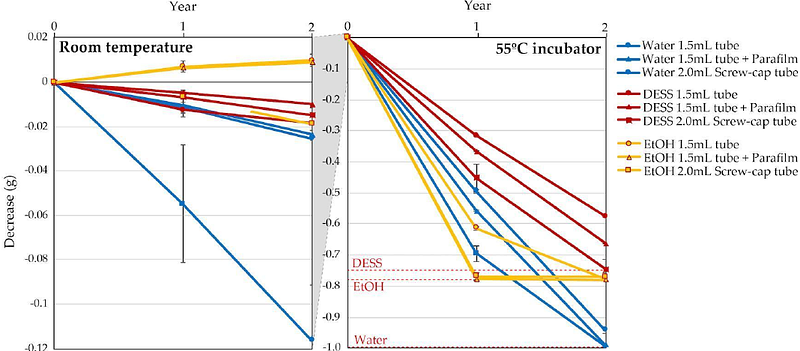DNA Specimen Preservation using DESS and DNA Extraction in Museum Collections: A Case Study Report

DNA Specimen Preservation using DESS and DNA Extraction in Museum Collections: A Case Study Report
Ogiso-Tanaka, E.; Shimada, D.; Ogawa, A.; Ishiyama, G.; Okumura, K.-i.; Hosaka, K.; Ishii, C.; Nam, K. O.; Hoshino, M.; Nomura, S.; Kakizoe, S.; Nakamura, Y.; Nishiumi, I.; Ito, M. A.; Kitayama, T.; Tanaka, N.; Hosoya, T.; Jinbo, U.
AbstractRecent advances in DNA research have increased the necessity for museums to preserve not only morphological specimens but also their DNA, leading us to maintain tissue samples linked to specimens at -80{degrees}C. DNA analysis has become an essential tool for taxonomic research and biodiversity assessment; however, freezer storage for all samples is impractical due to space limitations and operational costs. This creates a pressing need to develop more widely applicable DNA preservation methods. We investigated the comparative effects of traditional preservation methods versus DESS (DMSO/EDTA/saturated NaCl solution) preservation on both morphology and DNA integrity using museum specimens from various taxonomic groups. Our results demonstrated that DESS preservation maintained high-quality DNA fragments exceeding >15 kb at room temperature across all examined species, with nematode samples maintaining DNA integrity even after 10 years of storage. When preserving whole organisms, the optimal preservation solution conditions for maintaining both morphological features and DNA integrity varied among species. Notably, DNA integrity was maintained even after complete evaporation of the DESS solution. These findings suggest that DESS utilization for specimen DNA preservation is effective across many species, not only for long-term storage in environments without freezer facilities but also for temporary preservation until freezing.